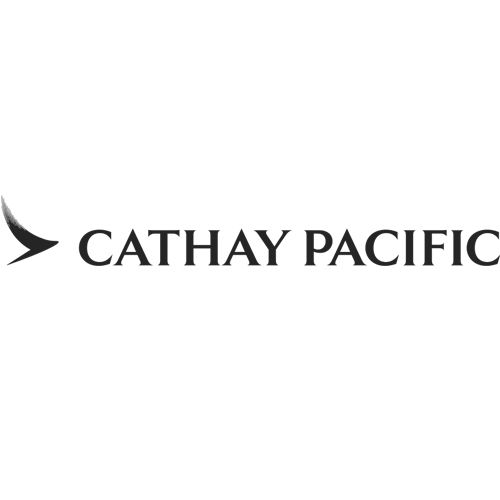Top eCommerce SEO Agencies in Singapore
- Tsamarah Balqis
- Sep 10
- 4 min read
Updated: Nov 25
Shortlisting an eCommerce SEO singapore partner in Singapore can feel like roulette. Everyone promises “page-one rankings,” but you need revenue, clean measurement, and a plan that scales with your catalog and seasons (11.11, 12.12, CNY).

This article gives you a clear evaluation framework, a curated shortlist of agencies active in SG eCommerce today, and a copy-paste RFP checklist plus a simple CTA if you want a second opinion.
How we evaluated
Platform fluency: Shopify/Shopline/Woo/WP; feed & Merchant Center hygiene.
Technical SEO:SEO expert in singapore crawl/index controls, Core Web Vitals, structured data, hreflang.
Category & PDP strategy: collection architecture, internal linking, faceted nav rules.
Content operations: hub/cluster planning tied to real buyer intent not blog spam.
Ethical links & PR: zero PBNs; product-led placements that build E-E-A-T.
Data & CRO: GA4/GTM events, product-level attribution, PDP UX, review schema.
Proof & repeatability: public case narratives, recognized directories/awards, consistent methodology.
The shortlist Top eCommerce SEO agencies in Singapore
1) Paper Cut Collective
Best for content-heavy brands that need SEO woven into lifecycle marketing.paper cut collective helps local eCommerce SEO to gain ROI within 3 months and shows case narratives across verticals, signaling strategic depth beyond rank tracking.
Why they stand out: Strong emphasis on intent-led content and measurement; good fit for B2B2C.
2) Cleverly SG
Best for Shopify stores wanting a hands-on Shopify SEO partner. They maintain a dedicated Shopify SEO practice (duplicate URL pitfalls, app overhead, hreflang) and are listed across local directories and the SG grant ecosystem.
Why they stand out: Shopify-specific SOPs for technical quirks and internationalization useful for stores expanding to MY/ID/PH.
3) Digitrio
Best for SEO-first eCommerce where technical hygiene and category structure are priority. Frequently cited in reputable directories; positions around traffic & revenue, not vanity keywords.
Why they stand out: Transparent SEO messaging and growth focus; good for mid-catalog brands aiming to fix foundations before scaling paid.
4) First Page Digital
Best for brands that want SEO services singapore + performance under one roof. They publicly showcase eCommerce case studies (e.g., retail/watch category) and industry recognition, suggesting mature delivery ops.
Why they stand out: Established eCommerce SEO frameworks and cross-channel capability useful when you intend to combine SEO with Shopping/DPAs.
5) Heroes of Digital
Best for SMEs and mid-market that need SEO plus CRO/performance muscle. Strong positioning around ROI and scale, with third-party mentions tying them to mixed SEO/ads programs.
Why they stand out: In-house team across SEO, design, analytics handy if you need site fixes and landing experimentation alongside SEO.
What eCommerce SEO actually involves
Architecture for scale: Collections, tags, pagination rules, and canonical logic that avoid duplicate bloat and channel authority to the right URLs.
Faceted navigation SEO: No-index vs index rules, crawl budget control, and internal linking from faceted states critical for large catalogs.
PDP conversion SEO: Title logic, variant handling, on-page media, review surfaces, and Product/Breadcrumb/Rating schema.
Category content & hubs: Search-led copy that ranks and actually helps shoppers compare.
Internationalization: Market subfolders + hreflang to prevent cannibalization.
Feeds & shopping surfaces: Merchant Center health; organic shopping surfaces reinforcing paid.
Measurement: GA4/GTM events mapped to product IDs; creative/content cohort analysis (group by concept, not just file).
If an agency hand-waves any of the above, keep shortlisting.
Budget & timelines
Audit & IA sprint (Weeks 1–6): technical crawl, CWV fixes, indexation cleanup, category map.
Content & links (Weeks 6–24): publish pillar + support collections/articles; ethical outreach and product PR.
Time to movement: quick wins from indexation/CWV can show in 6–10 weeks; category gains typically 3–6 months; compounding thereafter.
Directories and award pages confirm who’s active and recognized, but your site’s constraints drive pace. Use public sources to triangulate credibility not as absolute proof
Red flags
“Guaranteed #1 rankings” or link packages/PBNs.
No change logs or unclear ownership of tasks (dev vs SEO vs content).
Reporting that ignores revenue attribution or product-level outcomes.
One-size content (“10 blog posts/month”) with no collection/PDP work.
FAQs
Do I need a “pure SEO” shop or a full-service agency?If your bottleneck is technical/IA, a specialist can be faster. If you also need CRO/ads/creative, full-service may simplify ownership. Cross-check public proof of competence (case pages, directories, awards).
How many links are “enough”?There’s no monthly magic number. Evaluate quality + relevance and how links support priority collections avoid commoditized “packages.”
How quickly will I see results? Plan for 6–10 weeks for hygiene wins and 3–6 months for category lift, depending on competition and dev velocity.
Final recommendation
Shortlist 2–3 agencies that:
demonstrate platform fluency (Shopify/Shopline/Woo),
show technical & IA muscle,
tie work to revenue attribution, and
can operate with your dev and content constraints.
Then run the RFP checklist above and pick the team that explains what they won’t do as clearly as what they will.
If you’d like a neutral, Singapore-specific plan before committing, we’ll map your catalog, identify your fix-first priorities, and create a 90-day content/link plan that you can take to any vendor.

.png)
.png)
.png)
























.jpg)